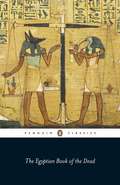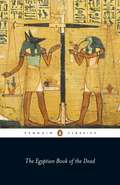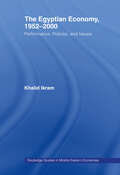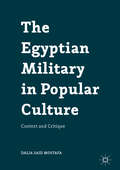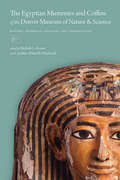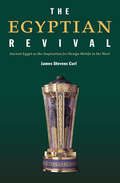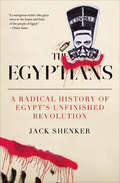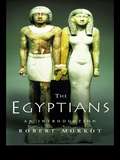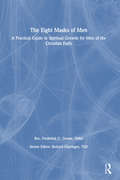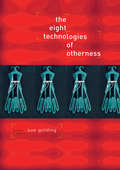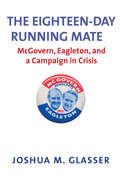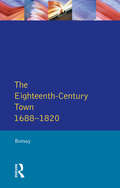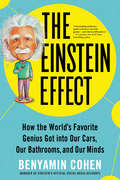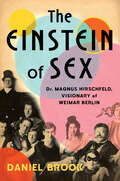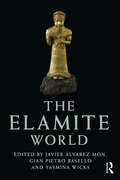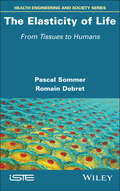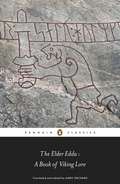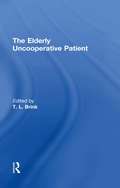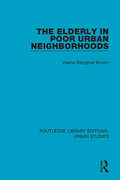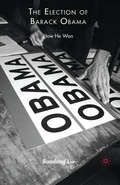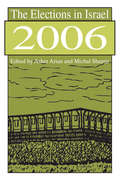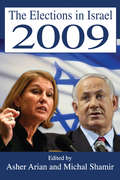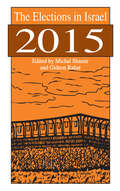- Table View
- List View
The Egyptian Book of the Dead
by John Romer Wallace BudgeA unique collection of funerary texts from a wide variety of sources, dating from the 15th to the 4th century BC. Consisting of spells, prayers and incantations, each section contains the words of power to overcome obstacles in the afterlife. The papyruses were often left in sarcophagi for the dead to use as passports on their journey from burial, and were full of advice about the ferrymen, gods and kings they would meet on the way. Offering valuable insights into ancient Egypt, The Book of the Dead has also inspired fascination with the occult and the afterlife in recent years.
The Egyptian Book of the Dead: The Papyrus Of Ani
by John RomerThe Book of the Dead is a unique collection of funerary texts from a wide variety of sources, dating from the fifteenth to the fourth century BC. Consisting of spells, prayers and incantations, each section contains the words of power to overcome obstacles in the afterlife. The papyruses were often left in sarcophagi for the dead to use as passports on their journey from burial, and were full of advice about the ferrymen, gods and kings they would meet on the way. Offering valuable insights into ancient Egypt, The Book of the Dead has also inspired fascination with the occult and the afterlife in recent years.
The Egyptian Economy, 1952-2000: Performance Policies and Issues (Routledge Studies in Middle Eastern Economies)
by Khalid IkramInterviews with former Prime Ministers and Cabinet Ministers along with previously unpublished analysis by the World Bank, IMF and USAID provide entertaining and interesting insights into Egypt's economic development policy during 1952 to 2000. Areas addressed include:* the performance of the Egyptian economy since 1950s* the factors that have facilitated or retarded economic performance* the Egyptian authorities approach to economic issues and policy-making * the chief questions that policy-makers will have to deal with in the next twenty years. Set apart by Khalid Ikram’s intimate knowledge of the Egyptian policy-makers this book presents a unique account of economic development and policy-making in Egypt during 1952 to 2000.
The Egyptian Military in Popular Culture
by Dalia Said MostafaThis book examines a key question through the lens of popular culture: Why did the Egyptian people opt to elect in June 2014 a new president (Abdel Fattah al-Sisi), who hails from the military establishment, after toppling a previous military dictator (Hosni Mubarak) with the breakout of the 25 January 2011 Revolution? In order to dissect this question, the author considers the complexity of the relationship between the Egyptian people and their national army, and how popular cultural products play a pivotal role in reinforcing or subverting this relationship. The author takes the reader on a 'journey' through crucial historical and political events in Egypt whilst focusing on multi-layered representations of the 'military figure' (the military leader, the heroic soldier, the freedom fighter, the conscript, the martyred soldier, and the Intelligence officer) in a wide range of popular works in literature, film, song, TV drama series, and graffiti art. Mostafa argues that the realm of popular culture in Egypt serves as the 'blood veins' which feed the nation's perception of its Armed Forces.
The Egyptian Mummies and Coffins of the Denver Museum of Nature & Science: History, Technical Analysis, and Conservation
by Michele L. Koons Caroline Arbuckle MacLeodIn the 1970s and 1980s, the Denver Museum of Nature & Science acquired two ancient Egyptian mummies and three coffins. The mummies are the remains of two women who lived in an unknown locale in ancient Egypt. They both died in their thirties and have now been subjected to a number of unpublished scientific and unscientific analyses over the years. In 2016, as DMNS prepared to update its Egyptian Hall, staff scientists decided to reexamine the mummies and coffins using innovative, inexpensive, and accessible techniques. This interdisciplinary volume provides a history of the mummies’ discovery and relocation to Colorado. It guides the reader through various analytical techniques, detailing past research and introducing new data and best practices for future conservation efforts. The new analysis includes more accurate radiocarbon dating, fully comprehensive data from updated CT scans, examples of Egyptian blue and yellow pigments on the coffins uncovered by non-invasive x-ray fluorescence, unprecedented analysis of the coffin wood, updated translations and stylistic analysis of the text and imagery on the coffins, gas chromatography of the paints and resins, linen analysis, and much more. The Egyptian Mummies and Coffins of the Denver Museum of Nature & Science provides replicable findings and consistent terminology for institutions performing holistic studies on extant museum collections of a range of material types. It will add substantially to what we know about the effective conservation of Egyptian mummies and coffins. Contributors: Christopher H. Baisan, Hans Barnard, Bonnie Clark, Pearce Paul Creasman, Farrah Cundiff, Jessica M. Fletcher, Kari L. Hayes, Kathryn Howley, Stephen Humphries, Keith Miller, Vanessa Muros, Robyn Price, David Rubinstein, Judith Southward, Jason Weinman
The Egyptian Revival: Ancient Egypt as the Inspiration for Design Motifs in the West
by James Stevens CurlIn this beautifully illustrated and closely argued book, a completely updated and much expanded third edition of his magisterial survey, Curl describes in lively and stimulating prose the numerous revivals of the Egyptian style from Antiquity to the present day. Drawing on a wealth of sources, his pioneering and definitive work analyzes the remarkable and persistent influence of Ancient Egyptian culture on the West. The author deftly develops his argument that the civilization of Ancient Egypt is central, rather than peripheral, to the development of much of Western architecture, art, design, and religion. Curl examines: the persistence of Egyptian motifs in design from Graeco-Roman Antiquity, through the Medieval, Baroque, and Neo-Classical periods rise of Egyptology in the nineteenth and twentieth-century manifestations of Egyptianisms prompted by the discovery of Tutankhamun’s tomb various aspects of Egyptianizing tendencies in the Art Deco style and afterwards. For students of art, architectural and ancient history, and those interested in western European culture generally, this book will be an inspiring and invaluable addition to the available literature.
The Egyptians: A Radical History of Egypt's Unfinished Revolution
by Jack ShenkerThe award-winning journalist and longtime Cairo resident delivers a &“meticulous, passionate study&” of the ongoing battle for contemporary Egypt (The Guardian). On January, 25, 2011, a revolution began in Egypt that succeeded in ousting the country&’s longtime dictator Hosni Mubarak. In The Egyptians, journalist Jack Shenker uncovers the roots of the uprising and explores the country&’s current state, divided between two irreconcilable political orders. Challenging conventional analyses that depict a battle between Islamists and secular forces, The Egyptians illuminates other, equally important fault lines: far-flung communities waging war against transnational corporations, men and women fighting to subvert long-established gender norms, and workers dramatically seizing control of their own factories. Putting the Egyptian revolution in its proper context as an ongoing popular struggle against state authority and economic exclusion, The Egyptians explains why the events since 2011 have proved so threatening to elites both inside Egypt and abroad. As Egypt&’s rulers seek to eliminate all forms of dissent, seeded within the rebellious politics of Egypt&’s young generation are big ideas about democracy, sovereignty, social justice, and resistance that could yet change the world. &“I started reading this and couldn&’t stop. It&’s a remarkable piece of work, and very revealing. A stirring rendition of a people&’s revolution as the popular forces that Shenker vividly depicts carry forward their many and varied struggles, with radical potential that extends far beyond Egypt.&” —Noam Chomsky
The Egyptians: An Introduction (Peoples of the Ancient World)
by Robert MorkotA widely published author on the subject, Robert Morkot presents a clear introduction to the origins, history and culture of Ancient Egyptian civilization. This excellent addition to the popular family of books on ancient peoples offers a broad coverage of Egyptian life. Morkot also addresses a number of important questions dealing with race and colour, Egypt's relationship with Africa and Egypt's legacy. The Egyptians includes chapters on: dynasties and empires society daily life religion art and architecture languages and literature. This engaging and accessible book provides students with the ideal introduction to this fascinating civilization.
The Eight Masks of Men: A Practical Guide in Spiritual Growth for Men of the Christian Faith
by Richard L Dayringer Frederick GrosseIn today's rapidly changing society, the rules you learned as a child may no longer apply, causing you to experience restlessness and confusion. The Eight Masks of Men: A Practical Guide in Spiritual Growth for Men of the Christian Faith will encourage you to come out from behind your mask of solitude and loneliness--one of man's most obtrusive masks--and reach out for help and community. By answering questions commonly asked by men of various religious and personal backgrounds, this book will help you tune into your feelings, innermost thoughts, and that void you feel inside. As you become consciously aware of how the eight masks are a part of your being, you will recognize the true gift beneath each one.The Eight Masks of Men is the first book to combine historical, theological, and sociological perspectives with a practical approach for personal growth. To help you divest yourself of your inhibitions and experience inner harmony, it blends personal stories, humorous anecdotes, biblical research, and clinical information. The eight masks that men wear and what they hide that author Rev. Dr. Frederick G. Grosse explores include:mask: loneliness; hides: desire for communitymask: rage and anger; hide: pain and hurtmask: compulsion; hides: desire for lovemask: performance; hides: desire for acceptancemask: control; hides: desire for friendshipmask: producing; hides: desire to just “be”mask: competition; hides: desire for humilitymask: institutional religion; hides: desire for spiritual growthDon't let tragedy or desperation strike before you commit to building a healthier relationship with yourself, the people important to you, and God. Men who feel out of touch with their spiritual sides, retreat and spiritual direction leaders, pastoral counselors, chaplains, marriage and family counselors, and members of the clergy will find in The Eight Masks of Men the inspiration and insight they need to guide themselves and one another to a season of union with God.
The Eight Technologies of Otherness
by Dr Sue Golding Sue GoldingThe Eight Technologies of Otherness is a bold and provocative re-thinking of identities, politics, philosophy, ethics, and cultural practices. In this groundbreaking text, old essentialism and binary divides collapse under the weight of a new and impatient necessity. Consider Sue Golding's eight technologies: curiosity, noise, cruelty, appetite, skin, nomadism, contamination, and dwelling. But why only eight technologies? And why these eight, in particular? Included are thirty-three artists, philosophers, filmmakers, writers, photographers, political militants, and 'pulp-theory' practitioners whose work (or life) has contributed to the re-thinking of 'otherness,' to which this book bears witness, throw out a few clues.
The Eighteen-Day Running Mate
by Joshua M. GlasserNo skeletons were rattling in his closet, Thomas Eagleton assured George McGovern’s political director. But only eighteen days later—after a series of damaging public revelations and feverish behind-the-scenes maneuverings—McGovern rescinded his endorsement of his Democratic vice-presidential running mate, and Eagleton withdrew from the ticket. This fascinating book is the first to uncover the full story behind Eagleton's rise and precipitous fall as a national candidate. Within days of Eagleton's nomination, a pair of anonymous phone calls brought to light his history of hospitalizations for “nervous exhaustion and depression” and past treatment with electroshock therapy. The revelation rattled the campaign and placed McGovern's organization under intense public and media scrutiny. Joshua M. Glasser investigates a campaign in disarray and explores the perspectives of the campaign’s key players, how decisions were made and who made them, how cultural attitudes toward mental illness informed the crisis, and how Eagleton's and McGovern's personal ambitions shaped the course of events. Drawing on personal interviews with McGovern, campaign manager Gary Hart, political director Frank Mankiewicz, and dozens of other participants inside and outside the McGovern and Eagleton camps—as well as extensive unpublished campaign records—Glasser captures the political and human drama of Eagleton's brief candidacy. Glasser also offers sharp insights into the America of 1972—mired in war and anxious about the economy, a time with striking similarities to our own.
The Eighteenth-Century Town: A Reader in English Urban History 1688-1820 (Readers In English Urban History)
by Peter BorsayThe eighteenth century represents a critical period in the transition of the English urban history, as the town of the early modern era involved into that of the industrial revolution; and since Britain was the 'first industrial nation', this transformation is of more-than-national significance for all those interested in the histroy of towns. This book gathers together in one volume some of the most interesting and important articles that have appeared in research journals to provide a rich variety of perspectives on urban evelopment in the period.
The Einstein Effect: How the World's Favorite Genius Got into Our Cars, Our Bathrooms, and Our Minds
by Benyamin Cohen"A fascinating and funny guide to history's favorite genius—and why he still matters." —A.J. Jacobs, New York Times bestselling authorA fascinating look into how Einstein's genius and science continues to show up in so many facets of our everyday lives and his enduring legacy as an unlikely pop culture icon.Albert Einstein was the first modern-day celebrity and, decades after his death, still has the world's most recognizable face. His influence is seen in much of the technology we use every day: GPS, remote controls, weather forecasts, even toothpaste. But it's not just Einstein's scientific discoveries that continue to shape our world. His legacy underpins the search for aliens, the rescue of refugees, the invention of time machines, and the debunking of fake news. He appears in new books, TV shows, and movies all the time—and fans are paying millions for Einstein relics at auction.Award-winning author and journalist Benyamin Cohen has a bizarre side hustle as the manager of Einstein's official social media accounts, which have 20 million followers—more than most living celebrities. In The Einstein Effect, Cohen embarks on a global quest to unearth Einstein's ongoing relevance today. Along the way, he meets scientists and celebrities, speaks to dozens with the last name Einstein (including two rabbis), and even tracks down the brain of Einstein, stolen from his body during the autopsy. Cohen shows us the myriad ways the Nobel Prize winner's influence is still with us, giving an in-depth—and often hilarious—look at the world's favorite genius like you've never seen him before.Praise for The Einstein Effect:"Benyamin is a regular Joe with great humility, a tremendous sense of humor, a philosopher with an acute awareness of human connection, a gift to us all." —Mandy Patinkin, actor, singer, activist"I hope this book encourages others to be inspired by Einstein as well." —Christopher Lloyd, award-winning actor"A book for geniuses and the rest of us alike." —Derek Baxter, author of In Pursuit of Jefferson"A thoroughly entertaining new book." —Jeff Einstein, great-great nephew of Albert Einstein"Full of humor and surprises." —Paul Halpern, physics professor and author of Einstein's Dice and Schrödinger's Cat
The Einstein of Sex: Dr. Magnus Hirschfeld, Visionary of Weimar Berlin
by Daniel BrookAn illuminating portrait of a lost thinker, German-Jewish sexologist and activist Magnus Hirschfeld. More than a century ago, Dr. Magnus Hirschfeld, dubbed the “Einstein of Sex,” grew famous (and infamous) for his liberating theory of sexual relativity. Today, he’s been largely forgotten. Journalist Daniel Brook retraces Hirschfeld’s rollicking life and reinvigorates his legacy, recovering one of the great visionaries of the twentieth century. In an era when gay sex was a crime and gender roles rigid, Hirschfeld taught that each of us is their own unique mixture of masculinity and femininity. Through his public advocacy for gay rights and his private counseling of patients toward self-acceptance, he became the intellectual impresario of Berlin’s cabaret scene and helped turn his hometown into the world’s queer capital. But he also enraged the Nazis, who ransacked his Institute for Sexual Science and burned his books Driven from his homeland, Hirschfeld traveled to America, Asia, and the Middle East to research sexuality on a global scale. Through his harrowing lived experience of antisemitic persecution and a pivotal late-in-life interracial romance, he came to see that race, like gender, was a human invention. Hirschfeld spent his final years in exile trying to warn the world of the genocidal dangers of racism. Rich in passion and intellect, The Einstein of Sex at last brings together this unsung icon’s work on sexuality, gender, and race and recovers the visionary who first saw beyond the binaries. A century after his groundbreaking work—as the fights for personal freedom and societal acceptance rage on—Hirschfeld’s gift for thinking beyond the confines of his world has much to teach us
The Elamite World (Routledge Worlds)
by Javier Álvarez-Mon Gian Pietro Basello Yasmina WicksAmongst the civilizations to participate in the dynamic processes of contact and interchange that gave rise to complex societies in the ancient Near East, Elam has remained one of the most obscure, at times languishing in the background of scholarly inquiry. In recent years, however, an increasing body of academic publications have acknowledged its relevance and suggested that its legacy was more considerable and long-lasting than previously estimated. The Elamite World assembles a group of 40 international scholars to contribute their expertise to the production of a solid, lavishly illustrated, English language treatment of Elamite civilization. It covers topics such as its physical setting, historical development, languages and people, material culture, art, science, religion and society, as well as the legacy of Elam in the Persian empire and its presence in the modern world. This comprehensive and ambitious survey seeks for Elam, hardly a household name, a noteworthy place in our shared cultural heritage. It will be both a valuable introductory text for a general audience and a definitive reference source for students and academics.
The Elasticity of Life: From Tissues to Humans
by Pascal Sommer Romain DebretElasticity is absolutely necessary for living a normal life. This fact is cruelly revealed when respiratory, cardiac, digestive, sensory, motor, reproductive or aesthetic problems appear following the inexorable decline of our elastic capital. The protection and maintenance of this capital is one of life’s priorities since this declination begins at the age of twenty and accelerates in times of crises and pandemics. However, there are no therapies yet designed to remedy it. The first part of the book explains the consequences surrounding a lack of elasticity in the skin, the most visible decline, and then other defects in elasticity throughout our bodies, exploring places rarely mentioned. The second part describes the research fighting against elasticity anomalies and examines useful behaviors to protect our elastic capital (e.g. our diets and physical and cognitive activities). This last point is at the heart of current social debates on nutritional, behavioral, environmental and even ethical levels.
The Elder Edda: A Book of Viking Lore
by Andy OrchardCompiled by an unknown scribe in Iceland around 1270, and based on sources dating back centuries earlier, these mythological and heroic poems tell of gods and mortals from an ancient era: the giant-slaying Thor, the doomed Völsung family, the Hel-ride of Brynhild and the cruelty of Atli the Hun. Eclectic, incomplete and fragmented, these verses nevertheless retain their stark beauty and their power to enthrall, opening a window on to the thoughts, beliefs and hopes of the Vikings and their world.
The Elderly Uncooperative Patient
by T.L. BrinkAn invaluable resource for the mental health professional who must deal with the uncooperative and difficult elderly patient.
The Elderly in Poor Urban Neighborhoods (Routledge Library Editions: Urban Studies #6)
by Valerie Slaughter BrownFirst published in 1997. Considerable research has been done to identify neighbourhood influences on children’s affective states, motivation, and behaviour. This population, along with the elderly, are the nation’s largest dependent groups. In contrast, little research has been done to determine what impact living among poor neighbours has upon older Americans, specifically upon their psychological well-being and neighbourhood satisfaction. In this study the author has sought out to explore this deficit, using a sociological standpoint to examine quality-of-life issues relevant to elderly inner-city residents. This title will be of interest to students of sociology and urban studies.
The Election of Barack Obama
by Baodong LiuThe historic election of Barack Obama, the first African-American president is analyzed from the perspective of racial relations. To trace the effect of time, Liu links Obama's multiracial winning coalition to the two-party system and the profound impact of racial changes since 1965.
The Elections In Israel--1988
by Michal Shamir Asher ArianForty years after becoming an independent state, Israel is still involved in deadly strife with many of its Arab neighbors and with the Palestinians under its military control. The protracted Arab-Israeli conflict is one of the most fundamental features of the Israeli experience; it overshadows economic and social decisions, and often sets the poli
The Elections in Israel 2003
by Michal ShamirThe Elections in Israel--2003 brings together leading Israeli and North American social scientists and their state-of-the-art, in-depth analysis of the 2003 Israeli national elections. These elections returned Ariel Sharon and the Likud to power amid one of the bloodiest rounds of conflict between Israel and the Palestinians and a severe economic downturn in Israel. Contributors analyze the electoral behavior of the voters as a whole and various subgroups, highlighting social cleavages and identity, as well as issues and other strategic considerations. Three chapters analyze in detail the Arab, the national-religious, and the "Russian" vote. The 2003 elections saw Israel's return to the family of parliamentary nations after it experimented with the direct election of the prime minister from 1996 through 2001. The impact of the adoption and repeal of this unique Israeli system of government is another major topic covered in this volume, and several contributions explore the impact of these changes upon the electorate, the party system, and party financing. Other unusual features of the 2003 elections were the low turnout levels among Jewish and Arab voters; political moves to disqualify Arab candidates and lists from running for office, which were overruled by the Supreme Court of Israel; the collapse of the left, the spectacular showing of the centrist Shinui party, and the dominant status of the Likud in the Knesset and in Israeli politics. Through its focus on the 2003 elections, this volume also illuminates developments and changes in Israeli society and politics. Many of these developments--multiculturalism, changes in social stratification, the growing role of the judiciary and of the media, and political reforms--characterize other Western democracies as well, and these are discussed from a comparative perspective. The Elections in Israel--2003 will be of particular interest to those concerned with politics in Israel as well as those concerned with comparative politics and elections in general.
The Elections in Israel 2006
by Michal Shamir Asher ArianSeveral dramatic events preceded the elections to the Seventeenth Knesset on March 28, 2006, beginning with the unilateral withdrawal from Gaza in August 2005 and its attendant and unprecedented removal of Jewish settlements and settlers, followed by major shifts among and within the various political parties. Most dramatic was the split in Likud when Prime Minister Ariel Sharon decided to form a new party, Kadima, leading to the breakup of the Likud party that Sharon had formed in 1973. This volume charts the 2006 elections.
The Elections in Israel 2009
by Michal ShamirThe elections to the 18th Knesset (legislature of Israel) were held on February 10, 2009, almost three years after the elections to the 17th Knesset and approximately twenty months before the original date set for them to be held. The elections are best understood in the context of the wars that were at each end of Ehud Olmert's government tenure, corruption scandals involving the prime minister, and the failure of Tzipi Livni, the newly elected head of the ruling center party, Kadima to form a new coalition following Olmert's resignation.The election campaign of 2009 began with the resignation of Ehud Olmert in the shadow of his corruption scandals and issues of integrity and clean government. This was followed by the world financial crisis, which directed attention towards the economic dimension and performance of the candidates. On the face of it, the campaign was cut short when military action began in Gaza. Still, the election was on the minds of candidates, and the question of who can best ensure security prevailed in the campaign. It becamepersonalized and focused on the candidates: the two candidates who had once headed the government and aspired to return, Benjamin Netanyahu and Ehud Barak, and the chairperson of Kadima, Tzipi Livni, who was running for the first time as head of a party.The Elections in Israel 2009 will be of particular interest to those concerned with comparative politics and elections in an open society. This volume is the latest in the series begun in 1969.
The Elections in Israel 2015 (Elections of Israel)
by Gideon Rahat Michal ShamirThe newest volume in the Elections in Israel series focuses on the twentieth Knesset elections held in March 2015 following the collapse of the third Netanyahu government. Prime Minister Benjamin Netanyahu’s main opposition party, the Zionist Camp, ran a negative personalized election campaign, assuming that Israelis had grown tired of him. Netanyahu, however, achieved a surprising and dramatic victory by enhancing and radicalizing the same identity politics strategies that helped him win in 1996. The Elections in Israel 2015 dissects these and other campaigns, from the perspective of the voters, the media and opinion polls, the political parties, and electoral competition. Several contributors delve into the Left and Arab fear mongering Likud campaign, which produced strategic identity voting. Other contributions analyze in-depth the Israeli party and electoral systems, highlighting the exceptional decline of the mainstream parties and the adoption of a higher electoral threshold. Providing a close analysis of electoral competition, legitimacy struggles, stability and change in the voting behavior of various groups, partisanship, personalization and political polarization, this volume is a crucial record of Israeli political history.
